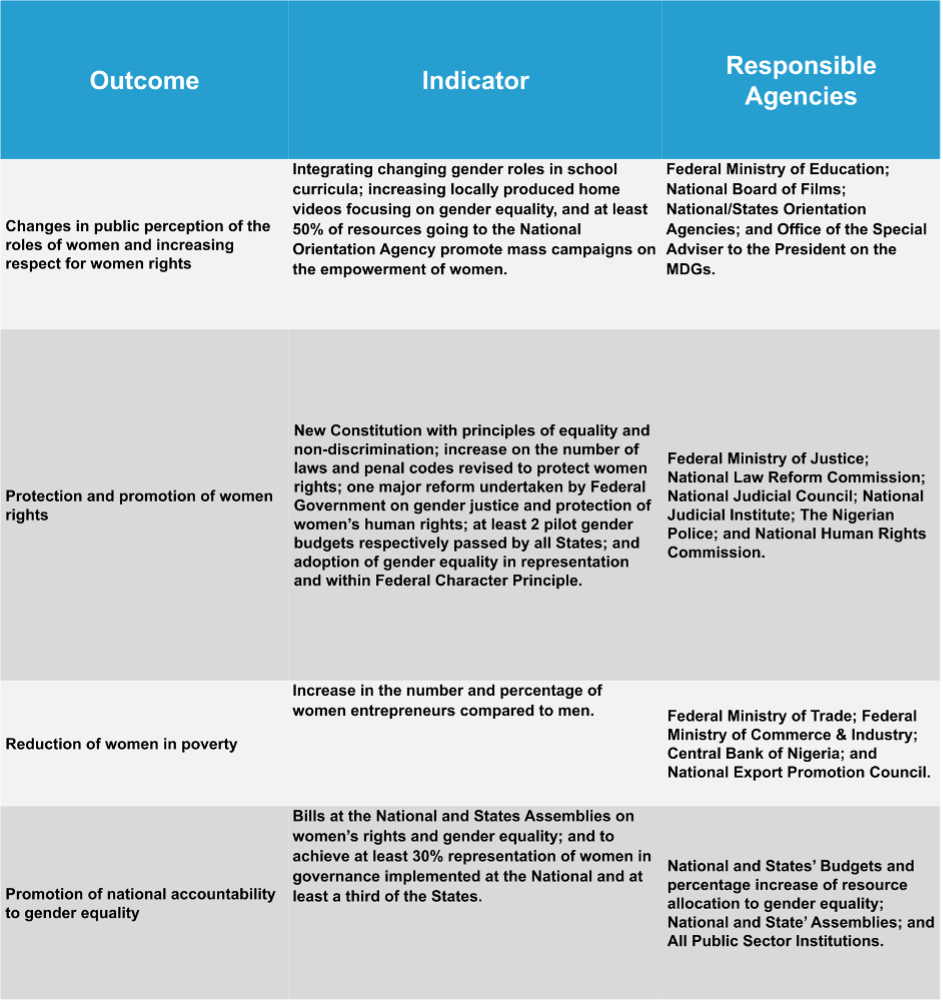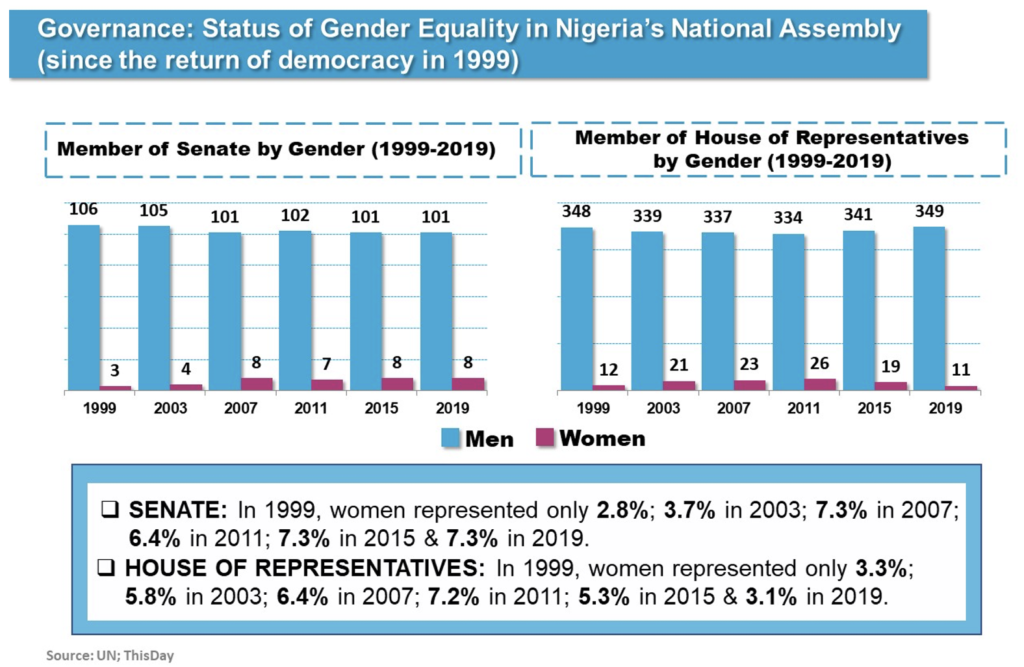Deconstructing Nigeria’s National Gender Policy (2006)
October 11, 2021
INSIGHTS & OPINIONS

INSIGHTS & OPINIONS

Introduction
Gender equality is one of the prerequisites of the United Nations Sustainable Development Goals. Gender equality is a development strategy critical to poverty eradication, improved health outcomes and living standards, and protection of the fundamental human rights of women. Empowering women, giving them a voice in decision-making and policy implementation, and ensuring their participation in economic activity and income generation leads to increased poverty alleviation efforts, improved standard of living, good governance, wealth creation and employment generation.
In response to these plausible gains from gender equality and in line with the SDGs, various governments worldwide have incorporated gender equality in their economic and national development plans and strategies. In tandem with best global practices, the Nigerian government in 2006 launched the National Gender Policy following an extensive research and consultation process involving various government and public sector development stakeholders and partners.
This article presents a brief analysis of the National Gender Policy 2006, highlighting the policy's objectives. It also evaluates the policy's results to see if its implementation has produced the desired results. The objective of this analysis is to underscore the need for more policy actions geared towards improving gender awareness and equality in Nigeria to foster economic and national development in Nigeria.
Objectives of the policy
In line with the guiding principles, the main objectives outlined in the National Gender Policy are to:
Policy Strategies
The national gender policy framework outlines seven broad strategies for achieving the goals of gender equity and equality at the individual, organizational, and national levels. These strategies are highlighted below.
Implementation Plan
The implementation plan for the policy was initially designed for a 5-year period, 2008 to 2013. The implementation plan outlines the mechanisms and strategic result framework for ensuring the attainment of gender equality targets across all sectors as specified in the National Gender Policy. This implementation plan is outlined in the table below.

Analysis
To evaluate the effectiveness of the gender policy, this article compares the implementation of the policy with the expected outcomes and indicators as specified in the strategic results framework.
Outcome 1: Changes in public perception of the roles of women and increasing respect for women rights
In contrast to the implementation plan, there have not been any changes in the curricula of primary and secondary schools integrating the changing roles of men and women in society. Also, the National Orientation Agency' strategic action plan 2021 – 2026 made no provision for campaign actions on gender awareness and women empowerment. However, there has been improvement in locally produced home videos on gender awareness and gender equality in the country.
Outcome 2: Protection and promotion of women rights
Assessing this outcome based on the specification of the gender policy implementation plan, there is no new constitution that incorporates the principles of gender equality and non-discrimination. The government is also yet to ensure that gender equality in representation is integrated within the federal character principles. According to the National Bureau of Statistics, between 2010 and 2015, women only accounted for 38 per cent and 42 per cent of state and federal government workers, respectively. Furthermore, there is still no pilot budget at the federal and state level on gender budgeting. However, some notable improvements include the increase in the number of laws and penal code protecting women’s rights and federal government reforms to ensure gender justice, such as the 2015 Violence Against Persons Prohibition Act.
Outcome 3: Reduction of women in poverty
The policy implementation plan focused on increasing the number of women entrepreneurs. This has been largely successful given the growth in women entrepreneurship in Nigeria. The latest Global Entrepreneurship Monitor annual survey shows women are at the forefront of start-up in Nigeria. According to the survey, 41 percent of the start-ups in Nigeria are founded and operated by women compared to 39 per cent start-ups founded and operated by men. This is in line with the policy objective of empowering women to engage in economic activity and to contribute to national economic development.
Outcome 4: Promotion of national accountability to gender equality
The policy implementation plan aims to achieve 30 percent representation of women in governance at the national and state levels. However, this has not been the case; the executive arm of government has not complied with the policy. In the Federal Executive Council (FEC), only 7 out of 44 ministers are women (16.3 per cent). Furthermore, in the current National Assembly, women make up 7.3 per cent of the senate and 3. 1 per cent of the House of Representatives (see details in Figure 1 below). No state governor is a woman. This limited participation of women in the political development of Nigeria highlights the need for inclusion and empowerment of women, especially when we consider that women comprise 49.5 per cent of the country's total population. Thus, there is a need for more advocacy for government adherence to the 2006 National Gender Policy, especially in the political empowerment of women.
Figure 1

Conclusion
The Nigeria government in 2006 launched the National Gender Policy in line with global best practices with the aim of incorporating gender equality in economic and national development plans. The policy was implemented for an initial 5-year period 2008 to 2013.
The policy has failed to achieve most of its desired outcome as stated in the implementation plan. There has been notable improvement in increasing the number of women entrepreneurs compared to men and in number laws and penal code protecting women’s right in line with the policy expected outcome. On the other hand, there is need for more concerted action in line with the policy to close the gender gaps in the political representation of women at the national and state levels. There is also need for the government to address gender inequality in public sector employment. Finally, there is need for the government to make provision for campaign action on gender equality and women empowerment in the National Orientation Agency strategic plan as stipulated in the gender policy.
This article was written by Malcolm Durosaye